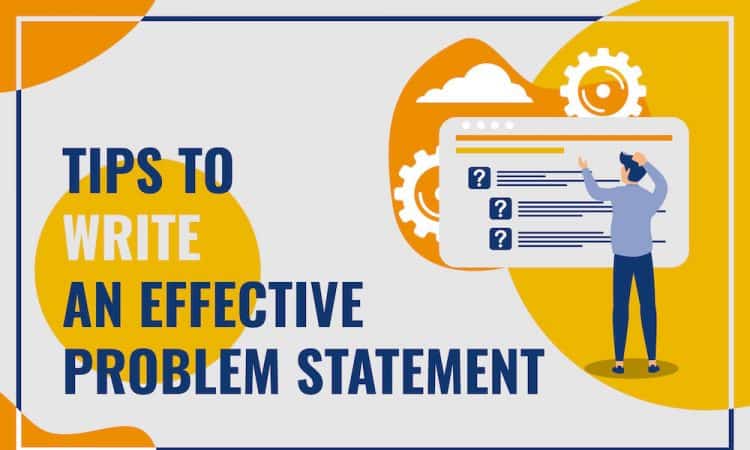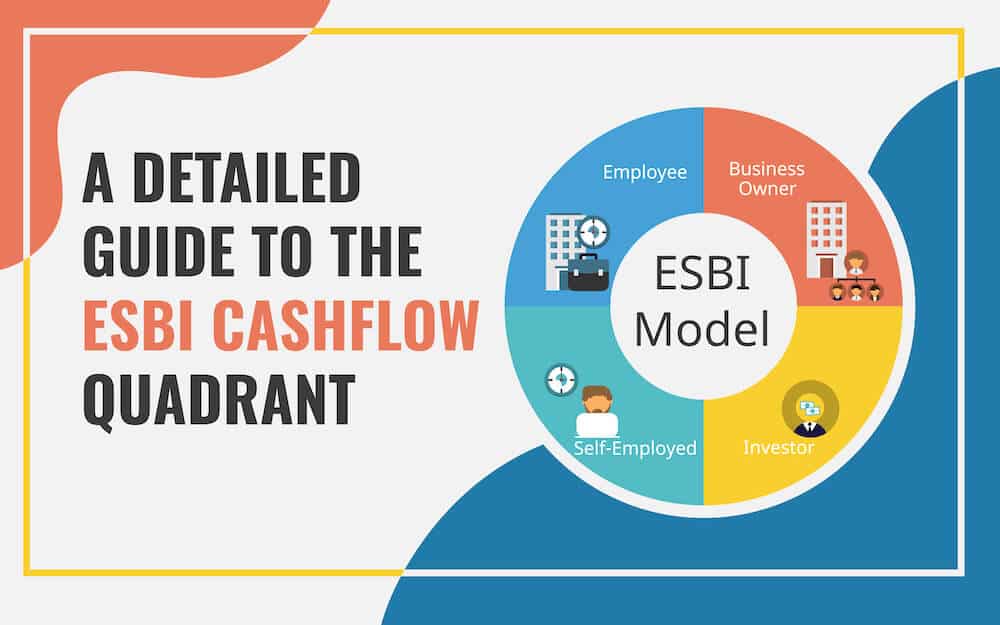
“If I had an hour to solve a problem I’d spend 55 minutes thinking about the problem and five minutes thinking about solutions.” – Einstein
This quote by Einstein emphasizes the need for a comprehensive understanding of a problem to solve it.
A problem statement helps you analyze the problem from different angles and perspectives, guiding you in devising the right solution.
Whether you are a scholar writing a research proposal or an experienced professional seeking management support to improve any process, mastering the art of writing a problem statement can make a huge difference and ensure successful outcomes.
This article explains the importance and core elements of a problem statement and the steps to writing an effective statement. Read on!
What is a Problem Statement?
A problem statement is a clear and precise description of a challenge or issue that needs immediate attention and a quick resolution. A statement helps break down a complicated problem into tangible goals, laying a solid foundation for building effective and viable solutions in a timely manner.
A problem statement is used in many contexts, such as business plans, project proposals, product development plans, research proposals, conflict resolution, quality improvement, etc.
Importance of a Problem Statement
A well-crafted problem statement is the first step toward a successful project or research. It helps determine the project’s scope and focus, keeping all team members aligned with the overarching goal. In addition, it provides direction and aids in creating an action plan to find the relevant solution to the problem and deliver value to customers.
A problem statement provides crucial insights about resource allocation and prioritization, highlighting the activities and areas where persons, budget, and time must be allocated on priority. It also helps define metrics and set benchmarks for measuring success.
Six Questions a Problem Statement Must Focus
Each problem is unique. So, the statement for each problem must also be distinct and focus on the following questions:
- Who – Who is affected by the problem? It could be a specific sector, industry, process, project, person, or entity.
- What (The Gap) – What is the obstacle? For example, for a business, the problem could be lack of funds, weak brand identity, retaining talented employees, etc. For an educational institute, the hindrance could be infrastructure disparity, teacher shortage, outdated curriculum, etc.
- When (The Orientation) – When did the issue first surface or begin?
- Where – Where did the problem first occur or originate?
- Why (Importance) – Why did the problem occur? Why is it important to resolve it?
- How (Impact) – How is the issue impacting the process, project, people, or entity?
These questions will help you scrutinize the problem thoroughly and frame it concisely in a statement.
Steps to Write a Problem Statement
#1. Get a Clear Picture of the Problem
The foremost step in writing a problem statement is thoroughly understanding the underlying issue. You can conduct research, interview multiple stakeholders, or carry out surveys to gather data and understand the problem from different perspectives and viewpoints. In some cases, direct observation can also assist you in learning about the issue.
This step enables you to figure out the urgency, scope, limitation, and context of the problem.
#2. Describe the Problem’s Relevance
Explain the impacts and consequences of the problem to stakeholders in a simple and understandable language. Provide relevant examples, data, and statistics to highlight the gravity of the issue. Also, state the implications if it remains unresolved, such as increased financial cost to the company, negative brand image, etc.
Thus, by the end of this step, the significance and importance of resolving the obstacle must be clear.
#3. Backup Your Problem Statement
Support your statement with specific claims, evidence, or a case study to reflect the seriousness of the problem and draw the stakeholders’ attention instantly.
For example, if an issue has reduced the sales of a particular brand product in the last week, you can back up your claim with statistics gathered through a research study. This will add credibility to your statement and instill a sense of urgency among the decision-makers.
#4. Propose an Ideal Solution with Benefits
Now that you have clarity on the problem’s scope, importance, and context, explain how to deal with it. Make sure to propose more than one solution. Highlight each solution’s concrete and important aspects rather than focusing on minor details.
Also, demonstrate the tangible and intangible benefits of the proposed solutions to help decision-makers choose the best alternative. For example, you can explain how the proposed solution can generate new revenue streams, reduce production costs, enhance customer satisfaction and experience, etc.
#5. Seek Feedback
A problem statement is the first part of a report or proposal, so it should be clear and complete. To minimize the chances of error or ambiguity, share it with experts, colleagues, or other relevant stakeholders to seek their feedback.
Ask them:
- if the problem statement looks structured and logically organized
- If the statement reflects unbiasedness and a balanced perspective
- if the solution you have proposed aligns with their understanding of the problem, etc.
This step will help you uncover any flaws in your problem statement.
#6. Revise and Refine
Based on the insights and feedback gathered from stakeholders, refine and revise your problem statement.
As solutions depend on external factors, your problem statement should be agile and flexible to accommodate changes and provide a roadmap for the future course of action.
Features of a Good Problem Statement
a). Clear and Succinct
A vague problem statement can create confusion. Therefore, it must be short, clear, and relevant. It should also be free of jargon and written in simple language so that all concerned people can easily understand it.
b). Specific
Avoid writing a generic problem statement; keep it specific to the issue. By adding ‘specificity’ to your statement, you can create a focused and impactful solution to a given problem.
c). Feasible
The problem statement must showcase a realistic and genuine challenge that can be resolved with the available time, budget, and other resources. A feasible statement helps propose an effective solution and achieve meaningful outcomes.
d). Measurable
Write a problem statement in such a way that it provides a basis for measuring and evaluating progress toward solving it and facilitating data-driven decision-making.
e). Free from Subjectivity
A problem statement must be free from emotions, biases, subjective beliefs, and personal opinions. It must focus on evidence and facts so that rational solutions can be devised.
Communicating Problem Statement to the Stakeholders
A problem statement must be created considering varied perspectives and diversity of thoughts. In this context, clear communication of the problem statement is indispensable to create shared understanding, seek feedback, foster collaboration, and align all stakeholders’ efforts toward problem-solving.
A professionally designed presentation can notch up your communication game and increase trust and reliability among all the individuals involved in problem-solving. You can use the following pre-designed PowerPoint templates to showcase your information impressively and ensure consistency in your presentations-
1. Problem Statement
A visually enticing and versatile template to present all the major aspects of a problem, including its background, relevance, consequences, etc. You can effortlessly replace the sample text with your own content. Leverage this deck’s simplicity, elegance, and professionalism to make your conversation more meaningful.
2. Problem & Solution
Boost the visual punch of your presentation and intrigue your audience by presenting the problems of your domain and their solutions with high-definition graphics featured in this template. The use of white spaces in the slides will reduce the cognitive load and increase clarity, helping the audience better connect with you.
3. Problem Statement and Solution
The high-quality visuals provided in this template will take your interaction beyond the presentation. Use it to depict your problem statement and the relevant solution in a clear and concise manner. The soothing color patterns will make it easy for the audience to understand what you have to say.
4. Problem Solution Impact
Leveraging this template, showcase the problem, its solution, and the proposed solution’s impact all through one slide. Beautiful designs and layouts will keep your audience invested throughout the presentation.
5. Animated Problem Statement
Capture your audience’s attention by making your content dynamic and interactive with this animated presentation template. The slides in this deck feature a dark background with contrasting white fonts. The use of eye-pleasing colors in the graphics will impress your viewers, for sure!
6. Problem Summary
This minimalist yet power-packed template allows you to summarize your problem in minimum text without losing meaning and present it to your audience in a memorable way. Beautified with high-definition graphics and striking colors, this deck will transform your monotonous presentation into a visual delight.
8. Problem and Recommendation
This multipurpose and easily editable temple empowers professionals from different domains to highlight the problems of their respective fields and their relevant solutions. The vibrant colors and self-explanatory icons will make your text stand out.
9. Business Problems with Proposed Solution
With this modern and trendy template, you can convey your business problems and showcase proposed solutions to your team in an engaging manner like never before. The original design elements in the slides will help you forge a deeper connection with the audience and instill trust in them.
Conclusion
Problems and challenges occur in all domains, be it business, healthcare, education, finance, or personal life. The nature and complexity of the problem may differ in each endeavor or field; one thing in common is the requirement of a roadmap to navigate the obstacle. Here, a well-written problem statement provides a comprehensive guide to solving the issue at hand. It defines critical aspects of an obstacle and the scope of work of team members.
So, don’t overlook the importance of a problem statement; invest time and exert sincere efforts in writing it.



